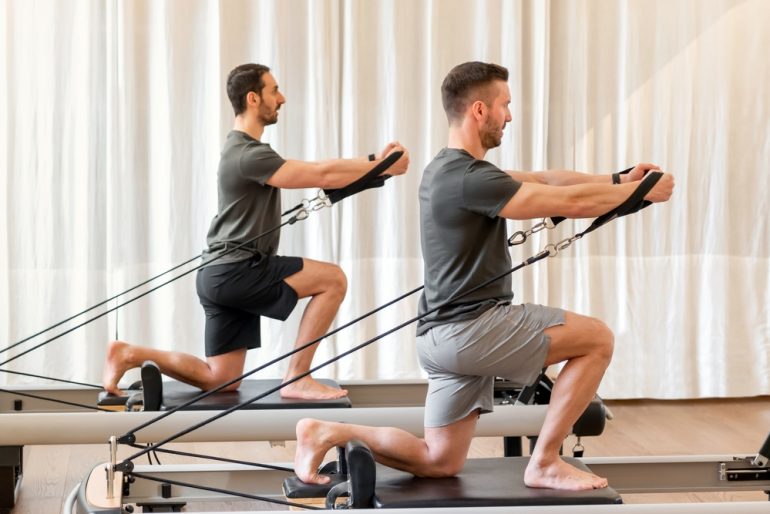8 ways to improve your Pilates practice and gain better results
Pilates is not like other workout routines. To reap all the benefits, you should be careful of several things. Here are 8 pilates tips to improve your practice and gain better results.
Pilates is a sort of mind-body exercise that is not only adaptive but also practicable, safe and helpful for everyone, regardless of one’s physical capacity, medical conditions, age, gender, etc. The movements you make while performing Pilates need physical control, mental attention, proper breathing, and most significantly, moving slowly and steadily. Unlike other workouts, it doesn’t call for you to work out intensely. Here are some Pilates tips that will help you to make the most of its benefits.
New Delhi-based fitness trainer Meenakshi Mohanty, who promotes a holistic and healthy lifestyle, explains how you can improve your Pilates workout.
Mohanty says, “Known for its focus on core strength, flexibility, and body awareness, Pilates offers numerous benefits for people of all fitness levels. If you are practising it but there’s no significant result, here are a few essential things to keep in mind to ensure a safe and rewarding experience.”
Tips to improve Pilates practice
Here are some key considerations to improve your Pilates journey:
1. Consult with a qualified instructor
Owing to its immense popularity, signing up for Pilates sessions may seem like an exciting prospect for many people. However, before diving into Pilates, it’s crucial to seek guidance from a qualified instructor or physical therapist. An expert will evaluate your fitness level, discuss any specific concerns or injuries, and tailor a program that suits your individual needs. They will ensure you perform exercises correctly, reducing the risk of injury and maximising the effectiveness of your workouts.
2. Focus on core engagement and alignment
Core strength is a key aspect of Pilates. Throughout your practice, the focus will be on engaging your deep abdominal muscles, including the transverse abdominis, pelvic floor, and obliques. Maintaining a strong core will enhance stability, improve posture, and prevent strain on other parts of the body. Also, since alignment plays a crucial role in Pilates, you must ensure optimal muscle engagement and avoid unnecessary stress on joints. Maintain a neutral spine, lengthen through the crown of the head, and distribute weight evenly through the body.
3. Breathe
Breath control is an integral part of Pilates, which is why it is ideal to start practising mindful breathing before you begin. Inhale deeply through the nose and exhale fully through the mouth. Coordinate your breath with movement, using the inhale to prepare and the exhale to engage your core and execute the exercise. Mindful breathing promotes relaxation, focus, and efficient oxygenation of the body.
4. Stay hydrated and consistent
Like any physical activity, it’s important to stay hydrated during Pilates. Don’t forget to bring a water bottle to your sessions and take sips as needed. Hydration helps maintain optimal bodily functions and supports muscle performance, which can prove highly useful while following this routine.
5. Warm-up
Always perform a 10 to 15-minute warm-up session before you start practising workouts. Due to the complexity of the Pilates routine, you must make sure to incorporate some basic stretches that target every muscle in your body. You can try doing arm stretches, forward bending, lateral lunges, a few squats, jumping jacks, rotating your wrists and neck, flexing your palms, stretching your biceps and triceps, side stretches, back kicks, and knee highs. They will open up your muscle and help in performing Pilates exercises.
3 mistakes to avoid while doing Pilates
1. Don’t rush
Before you begin, take some time to familiarise yourself with the core principles of Pilates. These principles, including concentration, control, centering, precision, breath, and flow, form the foundation of the practice. Understanding these principles will help you approach Pilates with the right mindset and enhance your overall experience. If you’re new to Pilates, it is advised to start with beginner-level classes or private sessions. These introductory sessions will introduce you to the fundamental movements and techniques. Building a strong foundation in the basics will help you progress safely and effectively as you advance to more challenging exercises.
2. Don’t expect quick results
You can be misled if you believe that doing Pilates will give you results right away. Everything takes time, and the whole point of Pilates is to exercise comfortably. Though it might aid in weight loss, do not anticipate significant physical changes. Your muscles will first show the alteration, and ultimately you’ll start to see weight loss.
3. Don’t ignore signs
Listening to your body is a key aspect of any exercise routine, including Pilates. Respect the limits of your body and avoid pushing yourself too hard. If something feels painful or uncomfortable, stop and consult your instructor. Pilates should challenge you, but it should never cause undue strain or pain. In fact, taking more time over an exercise will probably make it more challenging and increase the level of difficulty and effectiveness.
Takeaway
Pilates is not just about physical fitness; it’s also about establishing a strong mind-body connection and promoting overall well-being. Embrace the process, celebrate small victories, and appreciate the positive changes you experience along the way. By keeping these considerations in mind, you’ll be well-prepared to start your practice. So, get ready to embark on your Pilates journey and reap the benefits of this wonderful exercise system!

